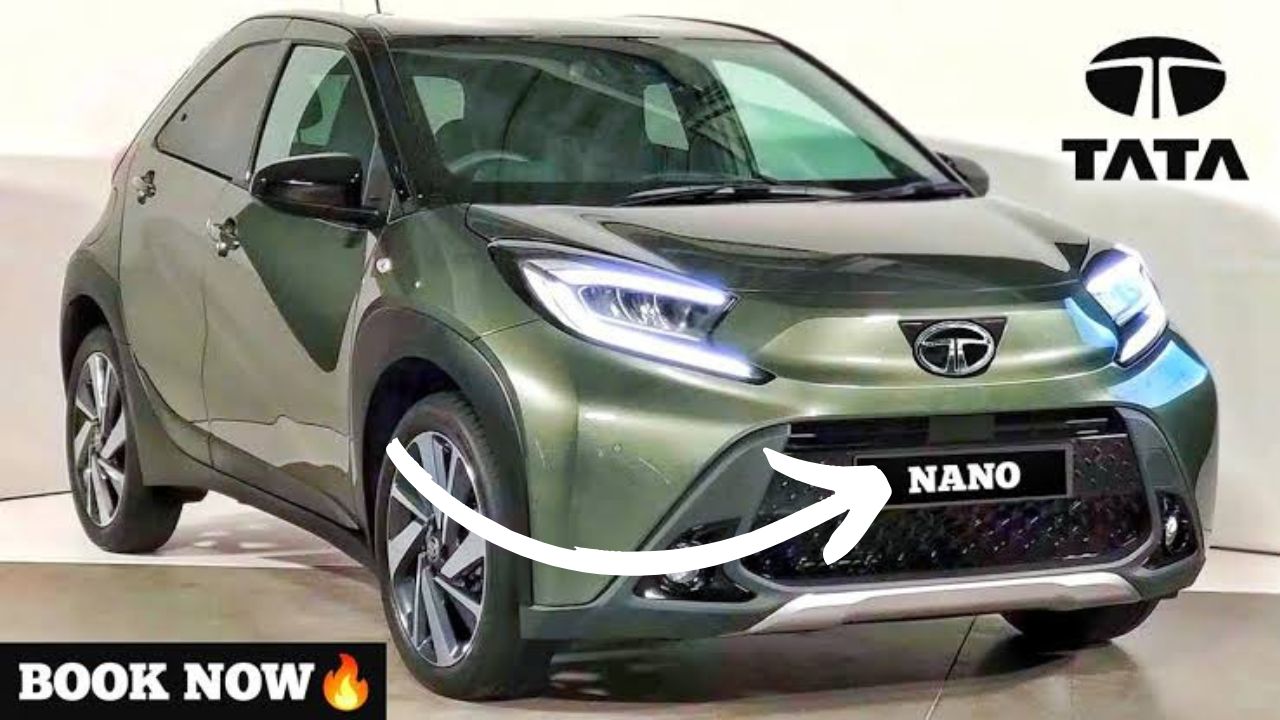The Tata Nano, once celebrated as the world’s most affordable car, is poised for a remarkable comeback – this time, as an electric vehicle. This transformation represents not just a technological leap but also a strategic shift in Tata Motors’ approach to the evolving automotive landscape.
From Concept to Creation
The original Tata Nano was the brainchild of Ratan Tata, who envisioned providing affordable four-wheel mobility to millions of Indians. Launched in 2009 with a price tag of just Rs 1 lakh, it captured global attention and sparked discussions about accessible transportation in developing nations.
Challenges and Discontinuation
Despite its innovative approach, the Nano faced several hurdles, including safety concerns, perception issues, limited features, and evolving consumer preferences. These factors led to declining sales, and by 2018, Tata Motors announced the discontinuation of the Nano.
Tata’s EV Ambitions
Tata Motors has been at the forefront of India’s electric vehicle (EV) revolution, with successful models like the Nexon EV, Tigor EV, and Tiago EV. The company’s commitment to electrification aligns with global trends and India’s push towards sustainable mobility.
Nano EV: A Promising Comeback?
The idea of reviving the Nano as an electric vehicle isn’t new. In fact, Tata showcased a Nano EV concept back in 2010, demonstrating early interest in electrifying their smallest car. Recent developments suggest that Tata might be seriously considering bringing the Nano back in an electric form.
Potential Specifications and Features
While official details are yet to be announced, industry speculation and Tata’s current EV lineup provide insights into what the Nano EV might offer.
Expect a powertrain with an electric motor in the 30-40 kW range, a lithium-ion battery pack with a capacity of 15-20 kWh, and a range of 150-200 km on a single charge.
The Nano EV could also support both AC and DC fast charging, and potentially feature battery swapping technology. Design-wise, the compact dimensions may be maintained, with a refreshed exterior and a modernized interior with digital displays and connected car features.
Safety enhancements, such as dual airbags, ABS with EBD, and improved structural rigidity, are also anticipated.
Market Positioning and Pricing
The Nano EV could appeal to urban commuters seeking an affordable electric option, first-time car buyers looking for an eco-friendly choice, and families needing a second car for city use. Industry experts speculate a price range of Rs 6-9 lakh, positioning it as one of the most affordable electric cars in India. It would directly compete with offerings like the MG Comet EV and potential upcoming micro-EVs from other manufacturers.
Challenges and Opportunities
The success of the Nano EV, like all electric vehicles in India, hinges on the development of charging infrastructure. Tata Power’s aggressive expansion of EV charging stations could play a crucial role.
Additionally, Tata Motors will need to overcome the perception issues that plagued the original Nano and position the Nano EV as a smart, modern urban mobility solution.
Favorable government policies, including subsidies under the FAME II scheme and state-level incentives, could further boost the Nano EV’s prospects.
Ratan Tata’s Personal Connection
Interestingly, Ratan Tata himself owns a custom-built electric version of the Nano, developed by Electra EV, a Pune-based company. This personal connection to an electrified Nano could be a driving force behind the potential revival of the model.
Transforming the Indian Automotive Landscape
If successfully launched, the Nano EV could play a significant role in making electric vehicles accessible to a broader segment of the Indian population, potentially accelerating the country’s transition to electric mobility.
The development of the Nano EV could also spur innovation in small, efficient electric powertrains and promote local manufacturing of EV components, aligning with India’s “Make in India” initiative.
Towards a Sustainable Future
The Nano EV’s compact size and zero tailpipe emissions make it an ideal solution for congested Indian cities grappling with air quality issues.
Mass adoption of affordable electric vehicles like the Nano EV could significantly contribute to reducing urban air pollution and lowering India’s carbon emissions from the transport sector, paving the way for a more sustainable urban mobility landscape.
Exploring Future Prospects
While primarily targeted at the Indian market, an affordable electric car like the Nano EV could find takers in other developing countries with similar urban mobility challenges.
As battery technology improves and costs decrease, future iterations of the Nano EV could offer better range and performance at even more competitive prices, further expanding its appeal.
Conclusion: An Icon’s Electrifying Comeback
The potential revival of the Tata Nano as an electric vehicle represents a fascinating convergence of nostalgia, innovation, and market dynamics.
If Tata Motors can successfully address the challenges that faced the original Nano while leveraging the advantages of electric propulsion, the Nano EV could become a game-changer in India’s electric mobility landscape.
As we await official announcements, the automotive world watches with keen interest, eager to witness the Nano EV’s transformative journey and its impact on the future of sustainable transportation in India.
Also Read This







